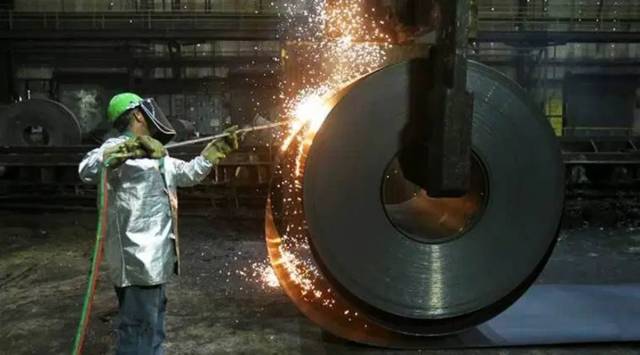FACTORY OUTPUT grew 5.2 per cent in January as against 4.7 per cent a month ago and 2 per cent in the year-ago period, mainly due to pick-up in manufacturing aided partly by low base effect, according to data released Friday by the National Statistical Office (NSO). Also, there was improvement in mining, capital goods and infrastructure/ construction goods output even as consumer durables output continued to be in negative territory suggesting subdued demand.
In absolute terms, the Index of Industrial Production (IIP) increased to 146.5 in January 2023 from 145.3 in December 2022 and 139.3 in January 2022. Manufacturing, which accounts for 77.6 per cent of the weight of the IIP, increased to 144.3 in January 2023 from 144.1 in December 2022 and 139.2 in January 2022. In percentage terms, manufacturing grew 3.7 per cent in January 2023 as against 3.1 per cent in December and 1.9 per cent in the year-ago period.

“We think this was driven partly by the low base, but possibly also by anticipated improved demand in light of China’s reopening news. The data suggests that manufacturing is still stronger in India than elsewhere in Asia, as also shown in PMI data… still, we think this strength
Story continues below this ad
in manufacturing could be one-off, and sustainability will be key to gauge if the sector is performing better than expected in Q1 having contracted in Q4,” Rahul Bajoria, MD & Head of EM Asia (ex-China) Economics, Barclays, said.
Industrial growth was pushed down mainly by textiles and electronics, experts said. “The former (textiles) has been affected by rising costs as well as declining exports due to the global slowdown. The computers/ electronics group witnessed a fall of 29.6 per cent this month. This sector was to benefit the most from the PLI scheme. Given that growth has declined by 3 per cent for the ten months period, it does look like the gains have not yet accrued,” Madan Sabnavis, Chief Economist, Bank of Baroda, said.
ExplainedThe key drivers
The big drivers of manufacturing growth were electrical equipment, beverages, motor vehicles, trailers and semi-trailers. But experts warn that the manufacturing pick-up could be a one-off case as the base was low and may not sustain.
The maximum increase in the growth in January was seen for the manufacturing of electrical equipment; beverages; motor vehicles, trailers and semi-trailers, while the maximum decline was seen for manufacturing of computer, electronic and optical products; wearing apparel; tobacco products and textiles.
Factory output had grown at 4.3 per cent in December, which has now been revised upwards to 4.7 per cent. Cumulatively, factory output has grown 5.4 per cent in April-January as against 13.7 per cent in the year-ago period.
Story continues below this ad
“Capital goods did well in January though there is a schism: electrical has declined while non-electrical has grown by 10.3 per cent. The auto sector continues to do well and this may be attributed more to the supply side issues being addressed… cumulative growth has been 5.4 per cent and it does look like that for the year we would end with growth in the region of 6 per cent,” Sabnavis said.
Electricity output grew 12.7 per cent in January 2023 as against a low base of 0.9 per cent growth in January last year. Mining output grew 8.8 per cent in January as against 3.0 per cent in the year-ago period and 10 per cent growth in December.
Capital goods output, which is indicative of investment demand, recorded growth of 11.0 per cent in January as against 1.8 per cent a year ago, while infrastructure/ construction goods output grew 8.1 per cent in January compared with 5.9 per cent growth last year.
“The capital and construction goods sector growth is receiving sustained support from the capex push undertaken by both Union and state governments. The capex by the Union and state governments increased by a robust 59.8% yoy and 25.6% yoy respectively in January 2023,” Sunil Kumar Sinha, Principal Economist, India Ratings, said.
Story continues below this ad
Consumer durables, which indicates consumption demand, continued to be in negative territory with a contraction of 7.5 per cent in January despite having a low base of (-)4.4 per cent. Consumer non-durables, which is an indicator for fast-moving consumer goods, grew 6.2 per cent in January as against 7.6 per cent in December and 3.1 per cent growth a year ago.
“A portion of the continuing, albeit narrower, contraction in consumer durables stems from weak exports,” Aditi Nayar, Chief Economist, ICRA, said. Nayar said that some of the available high frequency indicators recorded a weaker performance year-on-year in February relative to January and based on these trends, IIP is expected to record a dip in the year-on-year growth to 3-5 per cent in February.

































